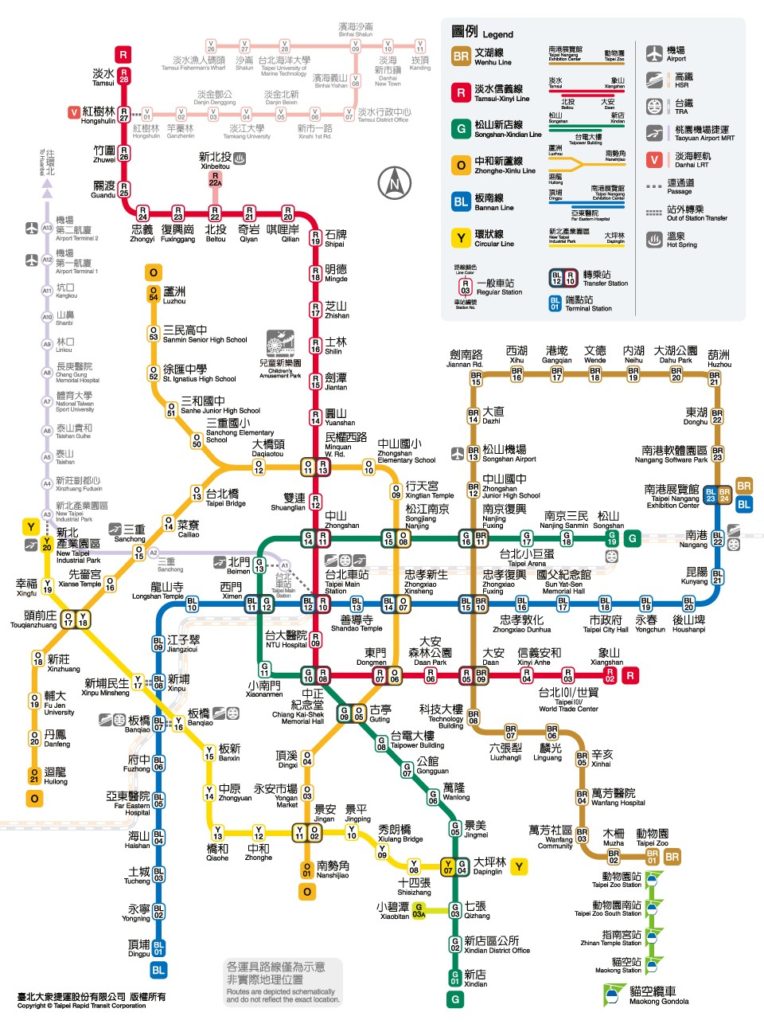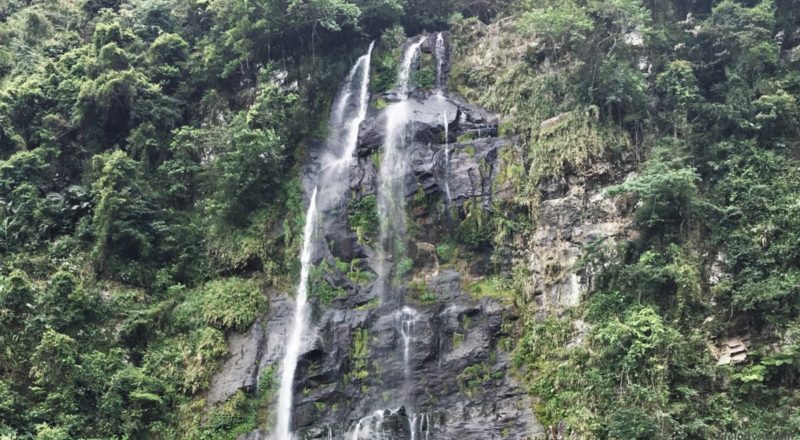The first time we visited Wulai (烏來) was in the winter of 2005. We were on vacation in Taipei and wanted a change of scenery from the tall buildings and crowded streets of the city but didn’t want to travel too far. So we booked a night at 美人湯溫泉會館, a hotspring hotel up in the Wulai mountains.
Our plan was to enjoy the view, soak in our own private onsen and visit the small shopping street (烏來老街) for some local food and snacks. We only managed to achieve two out of the three objectives, because weeks before our visit, heavy rains had caused landslides that cut off access to the shopping street.


When we booked our tatami-floored room, we knew that it was going to be spacious but we didn’t realise how big the separate onsen section was until we actually checked-in. There were two separate stone pools, one for hot water and the other for freezing (or at least that’s how it felt).
According to the prominent instructions, the correct procedure is to soak no more than 15 minutes in the hot pool at any one time, making sure that the water level doesn’t go above your heart, and to remain hydrated at all times. There was also a friendly warning about the effects of >42°C water on male fertility.
We happily spent the rest of the afternoon alternating between the hot and cold pools, learning first hand how frozen chickens feel like after repeated thawing and refreezing. The first few times were a shock to the system, but once you get used it to, it’s actually quite fun.




Since we had nowhere else to go for dinner, we ate at the hotel restaurant, which cooked us a really tasty meal with local specialties like mountain vegetables, wild boar meat and house-brewed rice wine. The rice wine was so good that we bought a couple of bottles and lugged them all the way home.
We enjoyed the stay and told ourselves that we would visit Wulai again and complete our third objective of visiting the old shopping street. But we got distracted by the central, eastern and southern parts of Taiwan and didn’t manage to return until the spring of 2019.
If you’re staying in Taipei city, getting to Wulai via public transport is fairly easy. Just use the wonderful metro system and take the Green (Songshan-Xindian) Line and get off at the final stop at Xindian (新店).

Once you get out of the station, head toward the main road (but don’t cross the road) and find a bus stop that has Bus 849 and take it all the way up to the Wulai terminal station. The same Bus 849 will take you back to Xindian station. You could catch a cab but it’ll cost quite a bit more and won’t have the same local feel as slowly going up the mountain.

After arriving at the Wulai terminal bus station, it was a short walk to the old shopping street. If you’ve been to similar streets at Jiufen (九份) and Danshui (淡水), it gives off a similar vibe but is much less touristy.
Our Taipei hotel for that particular trip was located at Songshan, exactly the other end of the Green Line, and we had slept in a bit. So by the time we reached Wulai, it was already close to lunch time.
There were many restaurants to choose from, but we still remembered the delicious 山蘇 (fiddlehead fern?) we had 14 years ago and the vegetable display of one eatery was particularly enticing.

Our lunch order comprised salt-and-pepper deep-fried baby prawns, rice cooked in a bamboo tube, two mountain vegetables and, in the bottom right photo, something that looked almost exactly like Singapore char kwa teow.
It was actually stir-fried wild boar in sha cha (沙茶) sauce, which is likened to satay sauce but tastes totally different. I’m usually not a fan of Taiwanese sha cha sauce, but this tasted very nice and paired very well with the gamey wild boar and ginger juliennes.
The vegetables were simply fried with minced garlic and were fresh, crunchy and delicious. Taiwanese locally-grown vegetables are really good, especially those grown up in the mountains. If you’ve never tried them before, you’re missing out. Even a simple stir-fried Taiwanese cabbage tastes amazing.




Lunch was quite filling but, as they say, there’s always room for dessert. And in this case, dessert was grilled Taiwanese sausage made with wild boar meat. In sausage form, the wild boar tastes less gamey and makes for a nice snack. We had more than few that day as we were walking along the shopping street.


The Wife is a fan of rail bikes and we had a memorable ride on the Gangchon Rail Bike during a day trip to Nami Island in Korea a couple of years back. So, when she found out that Wulai had log carts that went up the mountain, we had to check it out.
There are only two stations for the Wulai Trolley, one at the end of the shopping street across a small bridge and the other further up where the waterfall is located, with both stations connected via rail tracks.

The log carts themselves were super kawaii and would no doubt be a big hit with the little ones. But the first thought that came to mind when I saw them was: “Phew! They’re motorised and not pedal-powered.”


The 1.5km uphill journey went by quickly and took us past green forests. We travelled at a fairly leisurely pace, although it picked up considerably towards the end so you might to watch out as you approach the station.
I don’t know why they did that though. Perhaps it was to create a sense of excitement, or maybe the driver was bored and just wanted to have some fun.




The map at the Waterfall Station explained why they were called log carts: Wulai Log Cart, once manually operated, were light vehicles traveling between Wulai street and the waterfall shopping street. They were used to convey timbers (sic), and sometimes to transport tourists…”

There was also an old-school log cart on display. It must have been tough pushing those carts up the mountain in the good(?) old days.

We spent some time visiting the museum beside the station and listened to the very friendly and passionate staff on the history of how the tracks were built. Followed by a slow stroll along the waterfall shopping street, which was quiet and didn’t have many shops. If it was ever busy and popular before, those days have clearly long gone.

Attractions-wise, there were three main ones, the first being a statue of an Atayal Warrior and his goofy-looking hunting dogs. I may have been mistaken but it seemed to me like the dogs were cross-eyed, which must have made hunting a bit of a challenge.



Beside the statue was the Great Tree, and in-front of both was The Waterfall, standing 80m tall and 10m wide. It was barely a trickle that day, but it should be quite a sight during typhoon season, although coming up here then might not be the wisest decision.
When it comes to waterfalls though, it’s almost impossible to impress me anymore. Once you’ve seen the Niagara Falls up close on the Canadian side, nothing really even comes close.



The sights surrounding the Waterfall Station were, frankly, quite underwhelming, but the log cart ride up there was interesting. If you’re not a big fan of rail car rides, then you wouldn’t miss much by not travelling uphill.
Overall, it was a nice and relaxing trip to Wulai and we were glad to finally visit the old shopping street. One of the charms of Taiwan is that you’re able to enjoy both the bustling city and serene nature within a short distance of one another.
When you’re next in Taipei and in need of some quiet time, Wulai is definitely a good candidate to consider. Spend a night at one of their hotspring hotels and explore the old shopping street, preferably not waiting 14 years in between.
